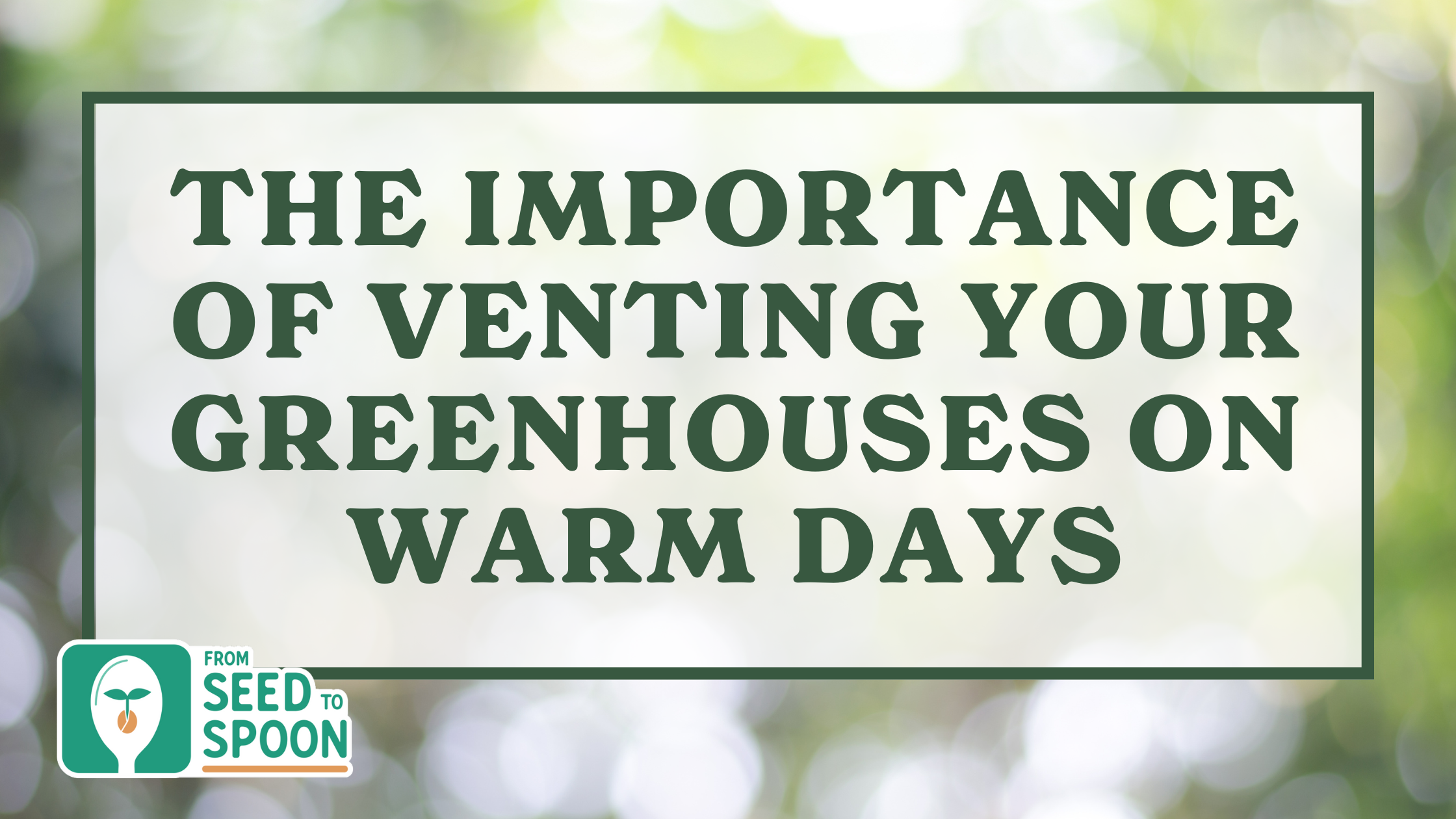
Gardeners who use greenhouses or garden beds covered with plastic sheeting know the value of creating a warm, controlled environment for their plants. However, managing the internal temperature is crucial, especially during unseasonably warm days. In this article, we’ll explore why venting your greenhouses is essential for maintaining the optimal growth conditions for your plants, drawing on advice for managing temperature fluctuations effectively.
Understanding the Greenhouse Environment
Greenhouses and covered garden beds create a microclimate that can significantly enhance plant growth by providing warmth and protecting from harsh weather conditions. However, this controlled environment can quickly become too hot, particularly when the sun is shining brightly on a warm day. Temperatures inside a greenhouse can soar, creating conditions that are unfavorable for many plants, especially cool-season crops.
The Need for Venting on Warm Days
On unseasonably warm days, with temperatures in the mid-60s (°F) or higher, it becomes crucial to vent your greenhouses. The process of venting involves opening parts of the greenhouse to allow fresh air to circulate and excess heat to escape. This is particularly important for gardeners growing cool-season crops such as lettuce, spinach, broccoli, and cabbage. While these plants require protection from freezing temperatures at night, they can suffer from overheating if the greenhouse is not adequately vented during warm, sunny days.
How to Vent Your Greenhouse
Venting can be as simple as propping open the doors, windows, or any other openings in your greenhouse. The goal is to create sufficient airflow to lower the internal temperature to a more suitable level for your plants. It’s essential to monitor the temperature inside the greenhouse throughout the day and adjust the openings accordingly to ensure that it remains within an optimal range for plant growth.
The Impact of Proper Venting
Proper venting ensures that your plants receive the warmth they need without the risk of overheating. This balance is crucial for the health and productivity of your garden. By maintaining the right temperature, you can prevent heat stress, which can lead to issues such as wilting, leaf burn, and stunted growth. Additionally, proper airflow reduces the risk of diseases that thrive in hot, humid conditions, such as powdery mildew.
Conclusion: Stay Vigilant and Keep Your Plants Happy
As a gardener, it’s essential to stay vigilant about the conditions inside your greenhouses, especially during unexpected warm spells. By taking the time to vent your greenhouses on warm days, you can protect your plants from overheating, ensuring they continue to thrive regardless of the outside temperature. Remember, a little effort in temperature management can lead to a bountiful, healthy harvest.
For those looking to streamline their gardening efforts, consider using the “From Seed to Spoon” app. This tool can help you track the conditions in your garden, offering reminders and tips, such as when to vent your greenhouses, ensuring your plants remain in optimal growing conditions.

Carrie Spoonemore, co-founder of “From Seed to Spoon,” stands as a beacon of inspiration for gardeners and health enthusiasts alike. Her journey alongside her husband, Dale Spoonemore, in creating a platform that demystifies gardening and promotes a healthier lifestyle, has made a significant impact on individuals around the globe. Through the “From Seed to Spoon” app, Carrie has dedicated herself to empowering people to take control of their health and environment by growing their own food.
With a profound belief in the power of gardening to improve mental and physical health, Carrie’s contributions to the Seed to Spoon blog reflect her holistic approach to wellness. Her articles often focus on the nutritional benefits of homegrown fruits and vegetables, organic gardening practices, and the mental health benefits of spending time in nature. Carrie’s expertise in health science shines through in her detailed discussions on how specific plants can contribute to a balanced diet and overall well-being.
Carrie’s passion for gardening is deeply intertwined with her commitment to family and community wellness. She frequently shares personal stories of how gardening has brought her family closer together, offering practical tips for involving children in gardening activities and making it a fun, educational experience. Her writing encourages families to explore gardening as a means of spending quality time together while learning about nature and sustainability.
In addition to gardening advice, Carrie’s contributions to the blog include insights into the use of technology to enhance the gardening experience. She has played a crucial role in designing the “From Seed to Spoon” app to be user-friendly, ensuring that users of all ages and backgrounds can navigate the complexities of gardening with ease. Her vision for the app is not just as a gardening tool but as a vehicle for change, inspiring individuals to adopt a more sustainable lifestyle by growing their own food.
Carrie Spoonemore’s presence on the blog is marked by her compassionate approach to teaching and her unwavering belief in the transformative power of gardening. Her work continues to inspire a community of gardeners to pursue a healthier, more sustainable way of living, proving that with the right tools and knowledge, anyone can become a gardener and advocate for their health and the planet.






